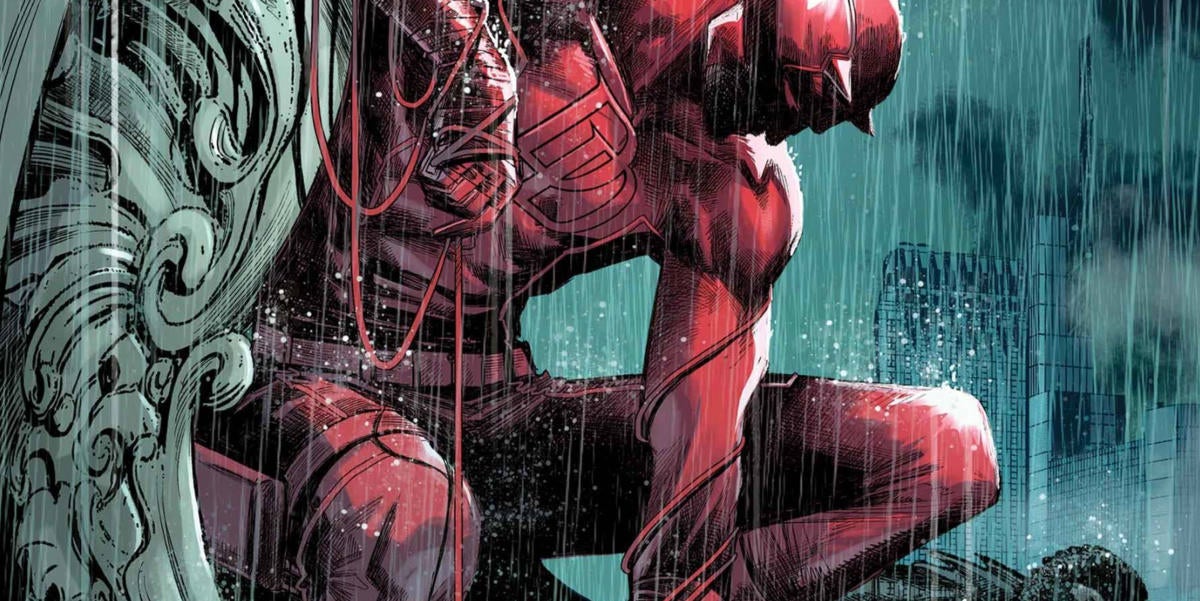Daredevil #1 Review: Leaving New York City's Mean Streets Behind
Writer Chip Zdarsky and artist Marco Checchetto reinvigorated Matt Murdock's story with a new status quo, approach to key themes, and inspired new plot lines more than 3 years ago in the pages of Daredevil #1. They return this week to continue that story in the pages of yet another Daredevil #1. The style and subject matter in this issue are very much a continuation of their acclaimed run, which climaxed in the Devil's Reign crossover event, but the story itself marks a significant enough shift to merit that often annoying new #1 on the cover. It's clear when the final page turns that the final leg of this particular journey is going to be very different from what preceded it.
In the wake of Devil's Reign, with Luke Cage running New York City, Wilson Fisk on the run, and Mike Murdock in his brother's grave, Daredevil is preparing for two major changes: leaving New York City and assuming control of The Fist, a splinter organization of The Hand intent on destroying their progenitor. That shift is grounded in a long-running subplot from the prior volume, which makes the shift towards supernatural figures and concepts more palatable as the realities of the United States are placed in the rear view mirror.

It's this alteration of tone that raises the most concern as Daredevil—perhaps Marvel Comics' most critically-acclaimed and influential long-running series, overall—has made its mark and defined itself as "street level" series. Past events relying on world-shaping conflicts and lots of magic, like Shadowland, have typically fallen flat. A glimpse of the Punisher, now leading The Hand in a significantly weaker pivot, suggests the two characters and their series are bound to overlap. The introduction of a new character in these pages is bound to prove controversial at first glimpse, especially given how widely mocked the 25-year-old "Angel Punisher" arc remains. Yet there's nothing in the pages of Daredevil #1 to suggest Zdarsky doesn't possess a better perspective on these ideas; the new mystical figure is carefully developed across the issue and their aura of mystery is more intriguing than concerning.
What's apparent in this new global framework of competing supernatural terrorist organizations is that the focus of Zdarsky and Checchetto's Daredevil has not changed. In conversations with Spider-Man and others Daredevil returns to the questions that motivated the very first story arc from these creators: What purpose does violence serve? How can one ethically maintain the peace? Is it possible to break current cycles to forge new systems? These are essential questions and Daredevil has grappled with them in impressively mature fashion, especially in criticizing the American carceral state.
These emphases are clearly borne out both in Daredevil's reflection upon New York City's future and flashforwards which have Matt confronting the purpose and effects of his work. That split timeline raises serious concerns about any possibility of genuine success and leads readers to question whether even the most inspiring of figures possess real answers. The confusion of a worsening world is embedded into every element of the issue, and it hits hard.
Checchetto's farewell tour of New York City is noteworthy in how it displays the artists' deft hand at depicting crowded and chaotic urban sequences, as well as the "uninflected eye" they bring to action sequences that allows violence to be read clearly and land with a shocking impartiality. A handful of farewells, almost always including violence or its threat, keeps readers focused on the many risks of Daredevil's role and the spiral of unintended consequences.
This extends to a backup feature, "The Island," with artist Rafael de Latorre focused on Elektra's mission to establish a new base for both Daredevil's. It primarily serves to showcase a vibrant mountain setting and addition to the cast, but the action presented is impactful and ensures the series' overall approach is well maintained.
Daredevil #1 removes its eponymous hero from his most familiar setting and elements in order to prepare for its final story, one set to feature a global stage and many mystical elements. The shift is bound to make some readers nervous given similar, past efforts, but the team at the heart of Daredevil's revival across the past several years reveals they haven't missed a step in their approach. Wherever this new #1 is preparing to lead readers, it's bound to be a story unlike anything seen in the title before and that alone is plenty promising.
Published by Marvel Comics
On July 13, 2022
Written by Chip Zdarsky
Art by Marco Checchetto
Colors by Matthew Wilson
Letters by Clayton Cowles
Cover by Marco Checchetto and Matthew Wilson
0comments